










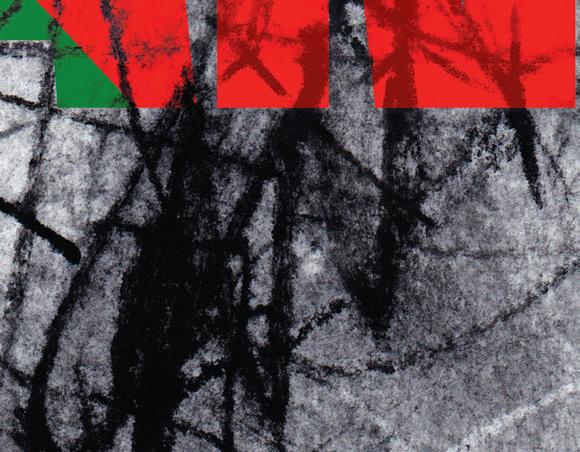






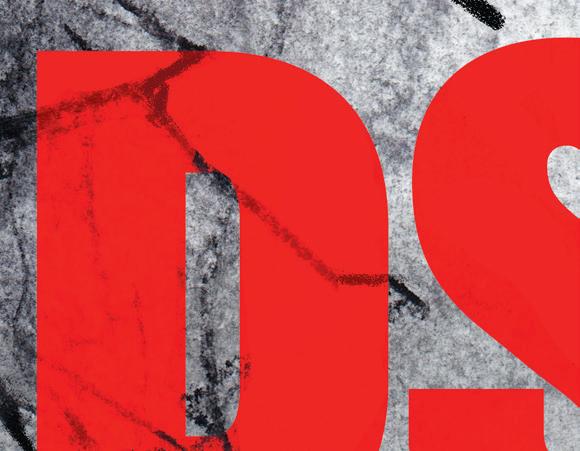


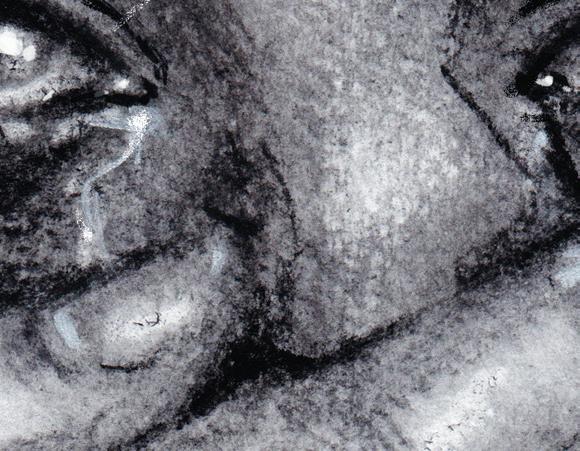









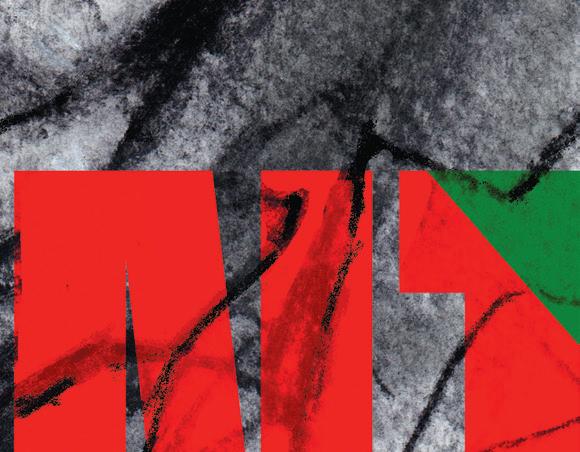







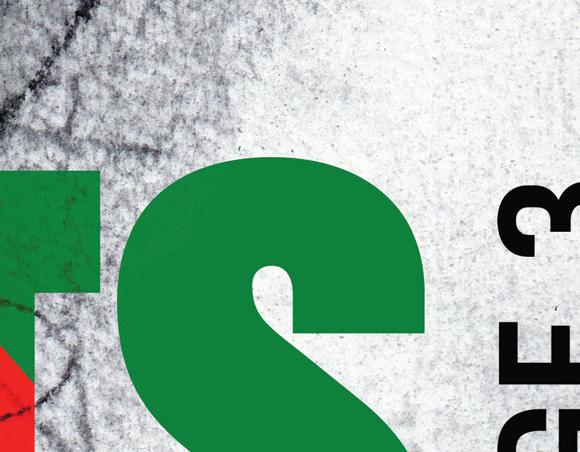
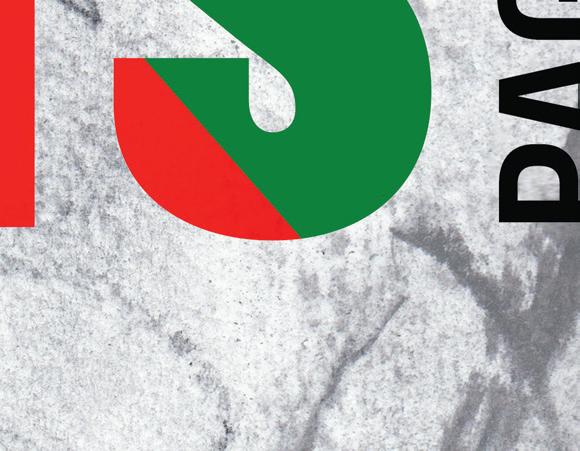
BREAKING: ‘I see this as an act of resistance’: former










































BREAKING: ‘I see this as an act of resistance’: former
This
dean files $2 million lawsuit against TMU
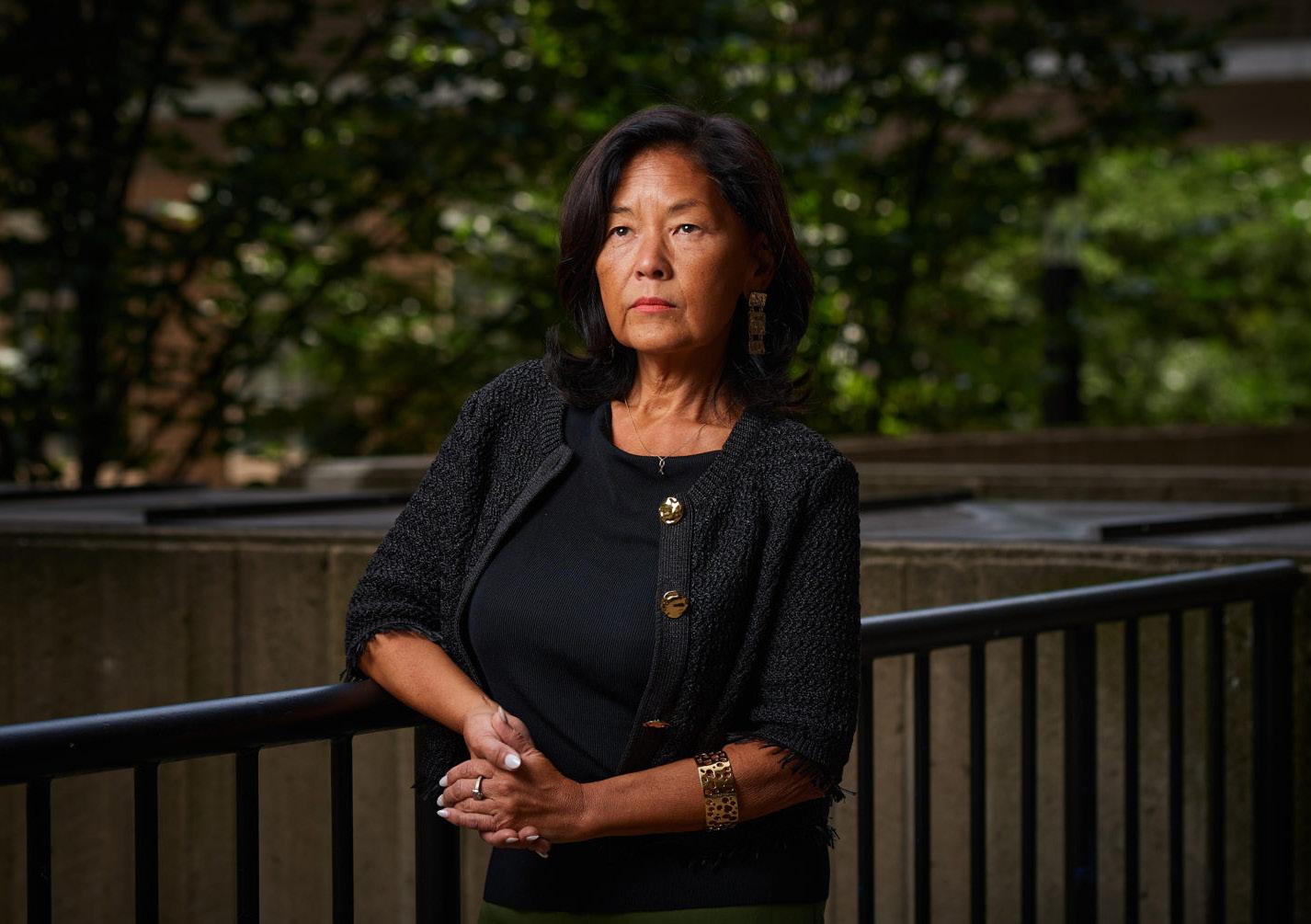
instructed not to operate within her capacity as dean by the Provost during this leave.
The former dean of the Faculty of Arts, Pamela Sugiman, has filed a lawsuit valued at over $2 million against Toronto Metropolitan University (TMU) following her termination in 2024.
A statement of claim was delivered to TMU on Sept. 2 in which Sugiman accused the university of breach of contract without prior notice, violations of Ontario’s Human Rights Code and unlawful seizure of her research funds.
Sugiman was in her second term as dean when she was notified of her immediate termination on July 31, 2024, during a meeting with Provost and Vice-President, Academic Roberta Iannacito-Provenzano.
At the time, Sugiman was taking an extended bereavement leave following the death of her only daughter in November 2023.
During this leave, Sugiman used the time as a period of healing and reflection, according to the statement of claim obtained by The Eyeopener. Sugiman had also been
Sugiman’s termination letter did not specify a reason for her dismissal, according to the aforementioned document.
“High-handed, callous, cruel and malicious
The statement claims the provost told her verbally that it was due to irresponsible leadership, mismanagement of faculty budgets and a lack of effort to increase class sizes.
The Provost gave Sugiman a performance review in the summer of 2023, in which the former dean was not informed of any budget or performance-related concerns, according to the statement of claim.
Sugiman said in an interview with The Eye that the termination was carried out in a “high-handed, callous, cruel and malicious manner,” especially since she said she was given “positive performance reviews” prior to her leave of absence.
Jacqui Gingras, a professor of sociology at TMU, views the claims of Sugiman’s alleged budget mismanagement as “baseless.”
“[Sugiman] was absolutely defamed when it was suggested that somehow she has mismanaged the budget…[Sugiman] is blameless,” Gingras said.
According to the statement of claim, over the course of Sugiman’s time as a senior leader and as a dean at TMU, her research has explicitly focused on race, gender and oral history.
“Dr. Sugiman became closely associated with equity for women, Indigenous scholars and academics of colour, and the creation of opportunities for research and teaching on issues of significance to historically marginalized communities,” the statement reads.
In her interview with The Eye, Sugiman said she was never fully acknowledged for her equity work by the university administration.
“I did receive support and got recognition from a former Provost, Michael Benarroch. However, more recently, I would say that I
did not receive the recognition that perhaps I deserved,” she said.
The statement of claim alleges that Sugiman’s termination is part of a broader pattern of TMU “sidelining women in leadership, especially those who view their role at the university through an equity lens.”
“There’s no point—my name is a red flag”
Lila Pine, a professor at TMU’s RTA School of Media, said Sugiman’s dismissal was “cruel” and goes against the university’s vision for equity.
“By removing her unceremoniously from her role as Dean, the administration has shown that their understanding of equity is only skin deep, despite paying lip service to it.” said Pine in an email statement to The Eye
Sugiman said she had a research account balance of $305,700 which was frozen and later drained by TMU, leaving only 36 cents. The claim for the tort of conversion is also part of the lawsuit.
After Sugiman’s removal as dean, she was allegedly defamed publicly by various members of the TMU community, including assistant vice-president, university relations Michael Forbes and President Mohamed Lachemi.
The Eye reached out to Lachemi, but he declined to comment on the allegations and criticisms, citing the ongoing lawsuit.
The claim states that as a result of her dismissal, Sugiman suffered “feelings of vulnerability, anxiety and despondence” as well as “loss of appetite, trouble sleeping and loss of confidence.”
Sugiman told The Eye that her dismissal has not only taken a toll on her mental health but could also harm her chances of securing future academic roles.
“Some people have sent me postings for different admin positions at other universities, and I’ve said… there’s no point—my name is a red flag,” she said. “‘Financial mismanagement’, [they] won’t want to go near [me].”
No court dates have been scheduled for the lawsuit at this time.
By Vihaan Bhatnagar, Negin Khodayari, Shumaila Mubarak and Damola Omole
A student was physically restrained and arrested on campus by Toronto Metropolitan University (TMU) Security on Sept. 19.
The guards involved in the arrest have been reassigned while their actions are under review and “will not return to campus duties pending the outcome of the review,” the university said in a press release on Sept. 20.
The victim was part of a proPalestine demonstration at a panel hosted by The Dais featuring Minister of Artificial Intelligence (AI) and Digital Innovation Evan Solomon.
Students were disrupting the event, which centred around government policies surrounding AI, calling out the involvement of digital tools in the genocide in Gaza.
They began chanting various phrases, including “Shame on you,” and “Arms embargo now!”
In September 2024, Human Rights Watch reported that there had been extensive use of AI and surveillance technologies in Israel’s attacks on Palestinians.
TMU Security was alerted and dispatched to the event. Toronto Police Service (TPS) were also called at approximately 12:38 p.m.
The student demonstrators were escorted out of the event by security, which took place in the Sears Atri-
um at the George Vari Engineering and Computing Centre.
On their way out, the victim was stopped and accused of trespassing by security who asked for her ID, which she allegedly refused to provide.
In a video of the incident obtained by The Eyeopener, TMU Security can be seen pushing the victim up against a window.
They’re seen holding her up by her shoulders as she loudly says, “Get off me, I’m trying to leave.”
When they let go of her shoulders, one of the guards then proceeded to lift her up and “[throw] her onto the ground,” a witness* told The Eye
“You’re under arrest for assault,” a TMU security guard is heard telling the victim in the video, which has since been posted to TMU’s Students for Justice in Palestine’s Instagram account.
The graphic video shows the guards pinning the victim to the ground and one putting their knee on her back.
“Get off me, get off me, you’re on top of me,” the victim is heard saying. “I can’t breathe. You’re hurting me.”
While on the ground, the guards put the victim in handcuffs and walked her out of the building towards Campus Planning and Facilities (CPF) at 111 Bond St., where they held her for over an hour.
According to section 494 of the Criminal Code of Canada, citizens—including security guards— are allowed to arrest individuals
only if they believe they have “committed a criminal offence” or are escaping after having committed a crime.
A group of around 20 bystanders, including TMU student protesters, faculty and others, gathered outside CPF.
No one was allowed to enter the building, and updates on the victim’s well-being were not shared at first, according to the same witness.
Some began chanting, “Lachemi, you can’t hide, you’re supporting genocide,” and “TMU, KKK, IOF, you’re all the same.”
In an email statement to The Eye, TPS said they were called to assist with crowd control, but upon arrival, they were told they were no longer needed. There were no arrests made by TPS.
All persons operating as security guards in Ontario must be licensed by the province. Section 2.1 of the code of conduct under the Private Security and Investigative Services Act, 2005, says, “every individual licensee, while working as a private investigator or security guard shall refrain from using unnecessary force.”
A student** who participated in the demonstration accused the Canadian government of providing AI systems used in the genocide.
“They’re promoting AI right now…there’s people getting killed by AI systems,” they said. “When I said this [at the event], I walked out with security just yelling in my face.”
In July, Arms Embargo Now, a collective advocating against Israel’s genocide, reported that Canada has continued arms shipments to Israel.
This comes despite Prime Minister Mark Carney claiming—during April’s federal election—that “Canada does…have restrictions, probably from January 2024, on arms exports or permits for arms exports to Israel,” as previously reported by The Eye
Arms Embargo Now found entries in the database of the Israel Tax Authority that show Canadian goods, described by the Israeli government as military weapon parts and ammunition, continued to enter Israel.
On Sept. 16, a United Nations commission of inquiry concluded that Israel has committed and continues to commit acts of genocide against Palestinians in the Gaza Strip, in retaliation for Hamas’ attack on Israel on Oct. 7, 2023.
The news release also says that the incident is now a police matter, and the TMU community is encouraged to contact TMU Security or TPS.
*This source has requested to remain anonymous due to the sensitivity of the matter. The Eye has verified this source.
**This source has requested to remain anonymous due to the sensitivity of the matter. The Eye has verified this source.

Editor-in-Chief

Negin “Wrong Chat” Khodayari
News Editors
Shumaila “Back” Mubarak
Vihaan “To” Bhatnagar
Damola “Back” Omole
Arts & Culture Editor
Lama “Photographer”Alshami
Business & Technology Editor
Jerry “Still -70” Zhang
Communities Editor
Daniel “Road Trip!” Opasinis
Features Editor
Edward “Stressita” Lander
Fun & Satire Editor
Dylan “Clean Page” Marks
Sports Editors
Jonathan “Two Pages” Reynoso
Victoria “For Sports!”Cha
Production Editors
Jasmine “Technologically Challenged” Makar
Sarah “The Grish” Grishpul
Photo Editors
Ava “No Burping” Whelpley
Rachel “You Drew That?” Cheng Pierre-Philipe “Bank Vault” Wanya-Tambwe
Media Editors
Divine “Queue” Amayo
Lucas “Never Eaten” Bustinski
Digital Producer
Anthony “TA” Lippa-Hardy
Circulation Manager
Sherwin “Gaga” Karimpoor
General Manager
Liane “Pecan Pie” McLarty
Design Director
Vanessa “Presto” Kauk
Contributors
Eunice “Little Ms. Sunshine” Soriano
Breanna “poetry” Milton
Peyton “777” Andino
Shaye-Love Salcedo
Emily “Recruiter” Nascimento
Francesco “The Man” Cautillo
Omercan “2000x3000” Ozkan
Hannah “They’re So Bad” Sabaratnam
Oliver “Sign-Up” Ulster
Courtney “DMs” Powers-Luketić
Mohammed “Big Time Director” Mohyedin
Claire “Skydiver” Van De Weghe
Aditi “Harpist” Roy
Omolegho “Study Buddy” Akhibi
Mary Ann “Booth Keeper”
Maiangowi-Manatch
Evan “No W Burger!” Perry
Myrtle “In-running” Manicad
Trinity “Awesome” Lee
Lia “Retro” Pulumbarit
Address
TMU alumna immerses viewers into
female festival
By Eunice Soriano
As the lights dimmed among the plush seats of Roy Thomson Hall, myself and hundreds of other TIFF goers in the theatre audience were gradually immersed into the roaring crowds of Lilith Fair—the world’s only all-female music festival now made into a documentary.
Directed by Toronto Metropolitan University (TMU) image arts alumna Ally Pankiw, Lilith Fair: Building a Mystery follows the journey of the festival from 1997-99.
The documentary spotlights the festival’s founder, award-winning Canadian singer-songwriter Sarah McLachlan, who redefined the perception of female musicians in the entertainment industry forever.
While the 90s music scene saw the rise of many new artists branching from a wide selection of genres, McLachlan recalled in the documentary that radio stations would discourage playing two consecutive female artists.
Hoping to uplift and promote fel-
the world’s only all-
low female musicians, McLachlan started a phenomenon of inspiring concerts: Lilith Fair.
Throughout the documentary, Pankiw paints the perfect blend of contemporary sit-down interviews with heartfelt performances sung by Cheryl Crow, Sinéad O’Connor, Tracy Chapman and more.
The audience was humming along to the melodies of Paula Cole’s hit song “I Don’t Want to Wait” and Suzanne Vega’s classic “Tom’s Diner.” As that humming slowly translated into singing, I was reminded of how transformative music truly is, transcending generations of listeners.
In a political climate that sought to pit women against each other, Lilith Fair united women across the masses.
From snippets of the singers gleefully dancing together backstage, to the close-up shots of passionate fans screaming their hearts out or the female crew members who worked diligently behind the curtain, Pankiw excels in capturing
the essence of the festival through various perspectives.
I couldn’t help but feel envious of the lucky bunch that got to witness the magic for their own eyes and the ones who still carry on those memories today.
When reflecting on the festival’s success in a discussion after the documentary’s premiere, McLachlan credited the star-studded musicians and crew members who helped bring her vision to life.
“Never underestimate the power of a small group of women coming together to create positive change in the world,” said McLachlan.
In the midst of the laughter and encores, the festival faced criticism for its lack of ethnic and musical diversity among its pool of talent.
The label “Lilith White Fair,” encouraged McLachlan to introduce new artists into the lineup such as R&B and soul powerhouse Erykah Badu and hip-hop icon Missy Elliott. With Badu and Elliott’s songs added to the setlist, the festival earned an abundance
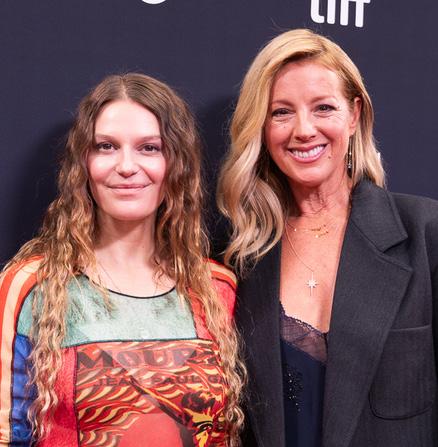
of new attendees and popularity.
Though I do appreciate the documentary’s efforts to embrace intersectionality, I would have also valued hearing the perspective of a woman of colour who attended it.
The festival notably platformed 2SLGBTQIA+ artists like the Indigo Girls and Tegan and Sara who spoke to how the fans and performers at Lilith Fair curated a culture where
they could be their unapologetic selves and blaze a trail for the modern Queer music scene.
In between the recurring interviews and performances, Pankiw weaves mixed media elements like newspaper clippings, stickers and posters that add to the landscape that the film portrayed.
Read more at theeyeopener.com
By Breanna Milton
On the north-west corner of Spain, the coast stretches for hundreds of kilometres. Mountainous cliffs tower overhead, covered with forested rolling hills. Cathedrals touch the sky and greenish blue water envelops its edges. In this quiet beach community with Celtic roots, rain is a frequent visitor. It’s the “Scotland of Spain,” as Paloma Stewart, a former Toronto Metropolitan University (TMU) student, calls it.
Having traded a life in Spain for Toronto, to pursue acting, Stewart’s career led her back—ironically close to her hometown—to film a TV show in Galicia, Spain. She’d just left her second year of TMU’s performance acting program to film the TV show, Marusia Vientos de honor . The story follows three female students who enter the Naval Military School of Marin, while a student’s death the year prior is under investigation.

Born and raised in northern Spain, Stewart moved to Canada in Grade 11. She carries an energy like rays of sunshine peeking through the cloudy skies here in Toronto. Her excitement about acting is palpable through the laptop screen where she shared her story.
Back in Spain, her parents owned a theatre company where they taught kids English through acting. Growing up around theatre and attending her parents classes, acting became second nature for her. Stewart had always been surrounded by creativity and so her longing to perform grew.
“I think it’s something that has always been a part of me, so I don’t really know what my life would look like if my parents hadn’t been actors,” she said.
She got her first agent at the age of eight. “I didn’t book any roles. It was just for fun,” she said. It wasn’t until she was 12 years old that she started taking it seriously.
There were no arts programs in her home town in Spain, so they moved to Toronto, where her dad’s family lives, so she could study acting.
Door after door closed, causing her to believe that there was something about her that was wrong. Whether she didn’t have the right look or she didn’t have a strong enough accent, it became difficult to stay confident.
“You’re fighting the whole time and everybody’s telling you that you’re worth nothing, that you
don’t fit for the role. You’re just not quite there yet,” said Stewart.
But her passion drove her to keep chasing an acting career.
While at TMU, Stewart had agents both in Spain and in Toronto. She was also working five jobs, attending auditions and keeping up with school.
Yet, she felt stuck in Toronto. As a child, she performed in recitals and a few short films, but the opportunities just weren’t lining up.
It wasn’t until last winter, when she was in Spain for the Christmas break, that she got a call from a casting director, who had seen so many of her tapes over the years and remembered her. The casting director asked Stewart to send a self-tape, and soon after, she was flown to Madrid for an audition.
On Christmas Eve, the call for Marusia. Vientos de honor came in.
“The timing was perfect,” she said.
Not only could Stewart fill a role in Spain as a young woman who never looked or sounded Spanish enough, but her tireless efforts paid off. “Every actor talks about this, it’s really hard to keep going and stay consistent in the industry because part of your job is auditioning all the time and you never get paid for it,” said Stewart.
But she added, “If you’re very passionate about something, it doesn’t really matter how many times you get slapped in the face. You just want to keep chasing it.”
Like many new professionals,
Stewart experienced bouts of imposter syndrome. As a new actor on set, sometimes she wondered whether she was good enough or if she belonged. “Being a young woman in a career where your looks and the way you perform are what makes you money, it’s a lot of pressure,” she said.
But as she kept filming, her confidence and comfort in this new world grew stronger.
“Being on set was really beautiful because it made me discover a lot of parts of myself,” said Stewart. For her role, she had to do navy training. “It was a whole experience…I really had to go to the gym, gain some strength and muscle,” she said.
Her character, Carmela Baltar Gil, is a perfectionist, sometimes to her own disadvantage, reminding Stewart of the younger version of herself. “That’s something that I really relate to, especially when I was living in Canada. You just kind of want to do everything and work all the time.”
For now, Stewart’s focus will be filming in Spain and maybe even filming internationally in the future. If Marusia. Vientos de honor is the only thing Stewart does as an actor, she’s content with that. She can revel in the accomplishment her childhood self dreamt of. She said it’s a comfort to have these challenging four years in Canada wrapped with something beautiful. She’s finally found the home she was searching for in
By Daniel Opasinis
Disclaimer: This article is not meant to serve as legal advice. Please sseek your own legal counsel when needed, as the laws surrounding these situations vary greatly depending on the circumstance.
Toronto Metropolitan University (TMU) security personnel can be seen across campus adorned in yellow, black or blue polos under their “GardaWorld” badges.
Recently, videos have surfaced of TMU security physically restraining a student on campus after a demonstration at a Dais event Friday, as previously reported by The Eyeopener.
Student’s rights on campus have become a topic of conversation and it’s important to know where you stand. The Eye spoke to a criminal lawyer to find out what guards are allowed to do and what students should know.
The following relate to campus security guards specifically, not to be confused with campus police, whose role descriptions differ.
Can security guards put hands on you?
Yes, but they need a reason to do so.
Under section 494 of the Canadian Criminal Code, any civilian or private civilian may perform a “citizen’s arrest” on someone who has committed or is suspected of committing a crime. Since campus security are not police officers, their abilities fall under those of other regular civilians.
The use of force in circumstances like these is key, as an unnecessary use of force could lead to criminal liability, the lawyer explained.
The Trespass to Property Act allows property owners to ask individuals to leave their property if they so choose. If an individual does not follow their request, private agents—like TMU security—can physically remove a person from property. Of course, the use of force here is still important to note, and cannot exceed what is necessary.
Outside of these situations, where there is no reasonable grounds, security putting their hands on someone is not warranted and could be assault, wrongful imprisonment or a case for other legal wrongdoings.
Can security guards detain you?
This also falls under the citizen’s arrest as security guards are able to detain an individual but only until police arrive.
Security cannot detain you for questioning or investigative purposes, as a citizen’s arrest requires a crime committed or the suspicion of a crime.
Can security guards arrest you?
The suspicion of committing a crime goes further than just a
feeling. An individual conducting a citizen’s arrest—in this case security guards—must have reasonable grounds to believe the person they are arresting has committed a crime.
Reasonable grounds is more than a “hunch,” it’s enough evidence that the regular person with common sense would believe a crime was likely committed.
There are three main reasons security guards could have the right to arrest someone.
The first reason would be that they were witness to, or found out that an indictable offence was committed. In summary, an extremely serious crime like murder, assault or theft over $5,000— to name just a few.
The second reason security guards could arrest someone is with reasonable grounds to assume they are fleeing or evading arrest from lawful authorities.
The third main reason is stated in the Trespass to Property act in Ontario, which says property owners can arrest, or have private agents arrest someone who is committing a crime on or in relation to the property they own. This reason is especially common in instances with campus security, the lawyer said.
In all situations, when an arrest is made by private agents like TMU security, the guards must immediately turn the individual over to police, who have the authority to conduct investigations.
Can security guards question you?
Security guards can ask you whatever they want, like why you are on the property, or even for a piece of identification, but this doesn’t mean you have to answer.
Other than instances under the Trespass to Property Act, where a property owner or agent could ask you to leave a property after committing a crime, you shouldn’t have any legal obligation to answer the questions of a security guard.
Any questioning done in relation to a citizen’s arrest must be supported by a legal authority, otherwise police, as they are the only ones with the ability to conduct an investigation.
The lawyer added that deciding to answer questions could impact your case, if the situation escalates to the courtroom. Deciding to answer questions from campus security guards could also complicate you in a student code of conduct issue.
Campus security are not police officers and are not required to advise you of your rights before questioning. It’s important to know that you are not required to answer questions from TMU security and to seek legal counsel in the event of a police investigation.
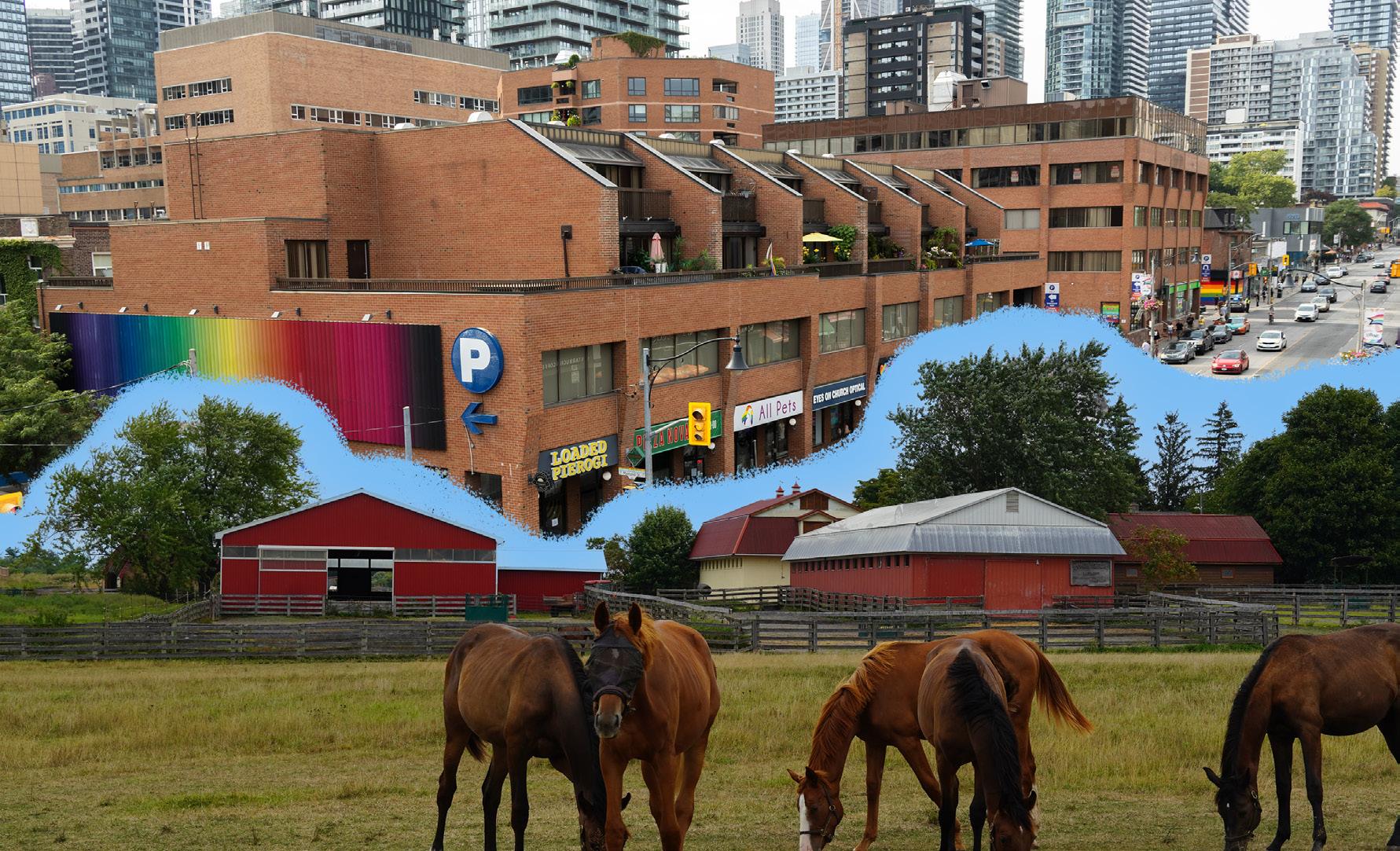
By Emily Nascimento
Toronto Metropolitan University (TMU) is home to a significantly Queer student body—10 per cent of undergraduate students according to a TorontoMet Today article on the Bill 7 Award—many using this space as an opportunity to grow into their identities. Constantly being encouraged to experiment with who they want to become. Which for some, who come from backgrounds with stricter views on Queer identity, means a lot.
Fifth-year English student Salma Hadid was eager to tell her story after moving to Toronto from Brampton a few years back.
“I feel comfortable wearing things that kind of signify that I’m a lesbian”
Hadid said since the Queer scene in Toronto is so well maintained, it felt natural to place herself here for her studies. “Toronto is sort of the space where [queer students] can be more free about [their identities]. And I think because of that, it sort of rubs off on me,” she said, a sentiment echoed across campus.
Another point that was mentioned was the allowance to experiment with appearance and gender expression. “In Toronto, there’s a more generally accepting attitude of just dressing how you want…I feel comfortable wearing things that kind of signify that I’m a lesbian,” she said.
Hadid said that on TMU’s campus, she feels comfortable dressing however she wants, not afraid that anyone will have something to say. “There are people my age who will also see those things and recognize it as hints that I’m Queer. So it felt comfortable to experiment being more visibly open in that way,” she said.
Joseph Medaglia, chair and associate professor in the School
of Fashion says there’s a reason fashion and the openness to dress a certain way is tied to the Queer community.
“Fashion navigates the interaction between our body and space and our body and communities and our body and our environment, it’s very much tied to our identity,” he said.
Medaglia said fashion is especially important to Queer folks, as being able to recognize people within the community and know you’re not alone can make a large city like Toronto feel much closer.
Marin Mcintosh, a second-year media production student said she’s a part of Queer organizations on campus—like the Ted Rogers Pride Allaince—and likes to surround herself with members of the 2SLGBTQ+ community.
“I’m from Burlington, so there’s lots of people, but not lots of queer people,” she said. “Going to the mall, if you hold hands with a partner of the same sex, you’re getting weird stares.”
Mcintosh said with all that goes on in downtown Toronto, a Queer couple holding hands is the least of people’s worries.
“Me and my girlfriend are high school sweethearts and now we both go here together. So we do lots of things together…we hold hands, my heart’s bouncing, and it’s just all been lovely,” she said.
Although some students agree that TMU is progressively creating a safer space for Queer students, there are still some feelings of separation due to how broadly it covers the community.
“Fashion navigates the interaction between our body and space”
Fourth-year psychology student Kiki Idoko said intersectionality plays a big role in how comfortable she feels on campus.
“I do meet people that are different or are unique or are also queer and lesbian, but there’s
also some struggles with that,” she said. “I feel like I fit into so many different groups at once that, like with certain people, there’s still aspects of myself that I have to protect and like still have to hide.”
“There’s still aspects of myself that I have to protect and like still have to hide”
Growing up in an especially religious community in London, Ont., Idoko says interacting with people from traditional or conservative cultures—like that of her hometown—can make her hide aspects of her Queer identity.
Hadid said being Queer is a large part of her life, but remains a very “foreign concept” to her South Asian family.
“I think with how little representation there is of South Asian Queer people in mainstream media even in Bollywood,” said Hadid. “I just never saw anyone who looked like me or who was from my culture, being represented as queer. And so for me, it’s a huge deal.”

The Centre for Addiction and Mental Health (CAMH) building at College Street and Spadina Avenue is a hulking grey tower with small dark windows. Its geometric concrete facade might be daunting to some, but to Jordyn Leschiutta, it's familiar.
The now-19-year-old has been coming here every six months since they were 14. Today, they’re here for an electroencephalogram (EEG), a test which will measure the electrical pulses in their brain. Once inside, a staff member places a plastic helmet resembling a hairnet over Leschiutta’s head with wires extending from electrodes on their scalp to a machine by their side. They’re asked to complete a series of activities while the device records.
After about an hour, the researchers have gathered what they need and Leschiutta is ready to go. For their time, they'll be paid about $100.
The second-year criminology student at Toronto Metropolitan University (TMU), is in their final year of a five-year research study with CAMH called the Toronto Adolescent and Youth (TAY) Cohort Study. Its goal is to better understand who is at risk of developing mental health challenges early on.
Leschiutta first heard about the study while they were a patient at CAMH themself—doctors told them they’d have the chance to contribute to research that could help young people like them who struggle with mental illness.
“I'm like, hey, I might as well use my
brain for research if I can,” they said.
The study isn’t invasive. It consists of two parts, soft tests like questionnaires, interviews and iPad games—and medical testing like MRIs, EEGs and blood tests.
Leschiutta says their motivations aren’t monetary—they would have done it for free. But the compensation, which will be just over $1,000 total by the end of the study, has been advantageous. They’ve used the money to buy textbooks, school supplies and everyday expenses.
“I'm like, hey, I might as well use my brain for research if I can”
They get the money and contribute to a good cause while CAMH gets to study their brain. For Leschiutta, that sounds like a win-win.
Students have been renting their brains and bodies to science for decades.
Until the 1970s, 90 per cent of pharmaceutical trials in the U.S. were conducted on incarcerated people—it was a similar case here in Canada, according to a 2024 CBC article. When regulations rendered this practice largely illegal, pharmaceutical companies turned to new test subjects— those who were in need of money. This typically meant unemployed people or those with low incomes, like post-secondary students.
Colleges and universities are also hubs of research in all kinds of fields, and when willing test subjects are needed for studies,
researchers often need to look no further than to the thousands of students roaming their campuses. There’s a long and storied history of student participation in research studies and the lengths they will go for the cash it provides. In the infamous 1971 Stanford Prison Experiment—a psychological study that turned violent after having college students pose as prisoners and guards—participants were paid only USD$15 a day—about USD$119 in today’s money. As the cost of living increases and students have more trouble finding stable work, the drive to get by on gigs has only gone up. Young Canadians are currently facing one of the highest unemployment rates in years and according to a poll from Embark—a not-for-profit that provides RESPs to students—one in four Canadian students have considered dropping out of school because of a lack of funds. It’s not hard to see why quick cash in exchange for the often low commitment of a research study is alluring to students with financial woes.
While turning from student to test subject can be rewarding, it’s not always so rosy. Many of these opportunities are hard to get into, require a great deal of time or come with real risks.
Nagina Parmar, a part-time lecturer in TMU’s Department of Chemistry and Biology, says most risks come with pharmaceutical studies, particularly phase I trials—which are the first tests on humans after animal testing
Paid studies let students rent their brains and bodies to researchers. For some, it's about the betterment of science—for others, it pays the bills
is complete. Parmar cited a 2016 French clinical trial in which a participant died from an adverse reaction to the drug being tested. This, of course, is the worst possible case.
Parmar is an executive chair on TMU’s Research Ethics Board (REB), an independent committee that oversees research studies at the university that involve human participants.
Many of the studies Parmar and the REB oversee are observational ones—those which measure qualities in participants, rather than test a treatment or drug.
Parmar says many participants in these studies are students who attend the school—both because it's convenient for researchers to connect with them but also because they’re often interested in participating in said research. Some of her own students have participated in studies regardless of whether compensation is provided. Researchers face a challenge when determining the amount of compensation for a study—if compensation is to be given at all.
financial fulfillment, many TMU students have taken the plunge and signed themselves up for research studies.
On the day of her first focus group, Ashley Byrne is led into a room with desks lined up in rows—it reminds her of an exam room. Dividers fixed to the desks prevent her from seeing the other participants. In front of her is a wall with a small sliding door. When the trial begins, the door rises to reveal a tray with a hamburger on it which is pushed out towards her. The trial is for McDonald's, she is told. To her side is a computer with a survey to let the testers know whether or not she’s satisfied with the burger. She’s not. It’s too big, has too many patties and sits in her stomach like a rock.
Byrne began to worry the intoxication was affecting her performance in the study. She felt like she was losing track of which drink was which
It’s about finding a balance, says Parmar. Researchers must ensure compensation is enough to retain participants, but not so much that it will “influence people to ignore the risks.” They must also consider participants' individual needs— things like expenses for parking or comped childcare.
Whether it’s for personal or
Byrne, a second-year sport media student at TMU, has been a test subject for food science studies for around a year now. Like many of the other participants she’s met in focus groups for these studies, she’s in it for the money.
Byrne first heard about the trials from a family friend after she quit her job in 2023. Though the family friend is a crossing guard by profession, she gets by “almost full-time” on the trials, according to Byrne. Byrne was told it would be a good way to tide herself over financially until she found more
stable work—she was convinced.
The focus groups she takes part in are conducted by a company called Applied Consumer & Clinical Evaluations (ACCE). On their website, ACCE describes itself as specializing in “sensory science, the very core of consumer and product research”—in other words, taste testing new food and drink products before they hit the market.

data gathered from browser history is often unreliable or simply incorrect. The straight-fromthe-horse's-mouth aspect of an in-person focus group is difficult to replicate.
Companies know this—and they’re willing to pay good money for this kind of data, so much so that ACCE alone has 390 clients, according to their website.
“It's just like extra money for an incredibly easy thing to do”
Byrne participates in-person at ACCE’s facility, a single-storey red brick building in the far West end of Mississauga. The facility contains two “state-ofthe-art” focus group rooms, each with an attached viewing area for researchers on the other side of one-way glass, according to ACCE.
Over the past year, Byrne has participated in about 10 focus groups with ACCE. But since securing a job as a Walmart cashier this summer, she’s only done one—a taste test for a Cadbury chocolate product.
On top of the pay, another benefit is the convenience. It's a relatively simple task— fun, even. She likes being able to share her thoughts on the products.
According to a 2021 article in The Wall Street Journal, focus groups—a method of gathering information on consumer interests—are having a resurgence. Though many experts predicted that data from consumers’ online activity would replace them as a primary method of market research, this hasn’t been the case. Studies have found that consumer
After it's all over, Byrne is paid around $30—not terrible for an hour of work, she thinks. Finding a new job was difficult for her, it was taking months. So why continue struggling though a hostile job market when she could make quick cash taste testing candy and fast food?
The money Byrne has earned from the focus groups is not nearly as much as she made at her job but she says it's been a helpful boost. She finds herself using it as pocket money.
Byrne says the trials have gone smoothly so far—she’s only had one that didn’t.
She signed up for a three-day test of a new alcoholic beverage— a vodka soda—and was given several versions of the same product, each with varying percentages of alcohol and different flavour combinations. Most were lemon, she says.
Byrne had to drink five small cups each day. As the study progressed, and she consumed more alcohol, she noticed herself becoming increasingly intoxicated.
Byrne began to worry the intoxication was affecting her performance in the study. She felt like
she was losing track of which drink was which and the results would no doubt be skewed because of it.
“How is anyone supposed to do this with so many drinks at once?” she said.
For this study, ACCE paid for a designated driver for Byrne—she chose her dad. He received a cheque for $60 at the end of the three days. She received one for $150.
“It's just like extra money for an incredibly easy thing to do,” she said.
For some students, the cash is just a bonus. Second-year TMU student
Saffron Binder participated in two studies this year, one for a PhD candidate’s dissertation and another for a masters students’ thesis.
Every year, Canadian universities pump out thousands of doctorate degrees. In 2021, they granted 8,157 of them, according to Statista. Many of these PhD candidates’ projects require test subjects to prove their theses. Luckily, university campuses are ripe with students willing to participate.
Both of the studies Binder took part in were related to COVID-19. Binder is a public health student and applied for the program because of a passion for preventing the disease—which she believes is being largely ignored at the expense of many people’s health.
When someone shared the callouts for the studies in a COVID-19 community group chat she’s part of, Binder was up for the task.
Only the masters student’s
study about creating safe online communities for the COVID-19 conscious, was paid. She didn’t mind, she was interested in furthering the research, not reaping the financial reward.
The task was relatively simple too. The study opened with a virtual one-on-one interview with the researcher and the latter half was generative. Binder was placed into groups with other participants and—using a virtual notetaking tool—they brainstormed ideas about how to build community and reduce harm in their spaces. Binder received around $30 for each of the four sessions.
After it's all over, Byrne is paid around $30—not terrible for an hour of work, she thinks.
Since discovering these studies, Binder has been on the lookout for others.
“If there’s any studies on [COVID-19] that are applicable to me, I try to volunteer for it,” she said. “Because I think we need more research into [COVID-19] in general.”
During an appointment for the TAY Cohort study last year, Leschiutta saw a poster calling for participants to join another CAMH mental health study. Now in university, they figured the extra cash couldn’t hurt and it was, once again, for a good cause.
This one, called the Depression Early Warning (DEW) Study, aims to track what depression looks like day-to-day in young people who have been diagnosed. Leschiutta
signed up. They’re currently in the final months of the DEW Study, participating concurrently alongside the TAY Cohort. For two to four weeks of every month, they wear a digital device resembling a watch that records physical activity, heart rhythm data and sleep patterns. During select weeks, they complete surveys called “electronic mood diaries” on their cell phone. Every three months, they have a check-in with researchers where they’re instructed on which tasks they’ll need to undertake next.
When Leschiutta completes a portion of the DEW Study, they’re paid in gift cards. The dollar amounts differ depending on how long they wore the watch and how many mood diaries they completed.
The gift cards are for all kinds of retailers and services—grocery stories, Amazon, Walmart. “All of the things,” they said.
Leschiutta is near the end of both their studies, but when they wrap up they say they’ll apply to more—especially as they qualify for new ones as they get older.
The same goes for Byrne—who recentley secured a new job as a cashier at a Walmart that opened in her neighbourhood this summer. Since then, she’s only done one focus group—a taste test for a Cadbury chocolate product.
Though she’s back to work, she doesn’t see a reason to stop.
To Byrne, it feels like she’s struck gold—she’ll be signing up
By Eunice Soriano
When fans try to watch an Ontario University Athletics (OUA) game, they come face to face with a paywall—the newest obstacle that prevents Canadian university sports fans from enjoying the thrill of OUA athletics from the comfort of their homes.
This paywall has challenged U Sports viewers to discover new ways to track games and engage with their favourite teams and student-athletes. However, rising Canadian-based media outlets are making this pursuit possible.
The founders of these groups aim to shed light on the beauty of Canadian university sports and make the viewing experience more accessible for fans one click at a time.
OB.SESSED
Bryden O’Flaherty is a graduate from the University of Regina, but not too long ago was throwing dimes as the former quarterback on the Regina Rams football team. He credits the team for not just heightening his love for the game but also for igniting the spark to grow the U Sports fanbase along the west coast.
“I was kind of chatting with all the guys in the locker room about how to grow sports and how to grow the fan base,” O’Flaherty said. “The Rams do pretty well in terms of attendance…but it’s like, how do we get those five figures of people watching it on TV?”
With the desire to increase viewership off the field, he teamed up with University of Ottawa graduate and former sports editor for The Fulcrum, Andrew Wilimek, to create OB.SESSED—a media outlet consisting of social media accounts and an app, providing their users with the latest updates on scores and stories across the country.
From in-depth game recaps to player profiles that highlight the league’s stars, Wilimek hopes he and his “established pipeline of writers” can draw attention to the wonders of U Sports and sustain the growth of OB.SESSED.
“We’ve got some really top notch writers on the app, so I think to me all the offerings are there. It’s just more a question of sustainability,” Wilimek said.
On the other hand, co-founder O’Flaherty applies his coding skills to fuse the Canadian sports scene with one of his favourite pastimes: fantasy football.
“One of the ideas I always latched on to was fantasy football, and how that made me more interested in the [National Football League] and actually understanding who the players are when I’m watching a game,” said O’Flaherty.
Since the addition of fantasy football and articles on the app, fans have become more attuned to the league and connected with a variety of players across coastal lines.
Inspiring the next generation of sports fans and media mak -

ers is a sentiment that Wilimek takes to heart when he envisions the future of OB.SESSED.
“For me, sports journalism is an outlet for creativity...and so I hope that enriches not just their experience and their portfolio, but also the experience of readers,” Wilimek said.
Wilimek hopes that OB.SESSED helps propel U Sports onto a grander stage.
“You quickly realize when you watch [U Sports] games, or you start following them through the media that does exist that [Canadian university athletics] are just as entertaining as the [National Collegiate Athletic Association] or any other amateur sport,” he said.
PRSVRE
PRSVRE Media Group is a sportscentric media group that draws upon their social media platforms to “rewrite the narrative, shed light on our athletes and celebrate Canadian university sports the right way,” according to their website.
The platform includes rapidly growing social media accounts and a YouTube series that gives viewers a glimpse into the life of a U Sports athlete. Their work has laid the groundwork for the next generation of media creators.
Growing up in Newfoundland, second-year student Olivia Byrne moved to Toronto to pursue TMU’s sport media program and explore the city’s ever-growing sports scene.
In search of a media outlet that would familiarize herself with the OUA, she stumbled across PRSVRE’s Instagram account and is now one of their active followers.
“I didn’t know a whole lot about the OUA and U Sports…I followed the account and it really helped me expand my knowledge,” Byrne said.
Byrne added she values the diversity of PRSVRE’s storytelling, not limiting their coverage to solely the “big four” sports—basketball, hockey, soccer and volleyball—but also expanding to facets that don’t get enough recognition.
“They’re open to talking about every sport. And I mean like posting insane rugby scores…posting U Sports football highlights—it’s everything. And I think that’s really cool,” she said.
Similar to Byrne, third-year sport media student Anjali Singh is an up-and-coming sports journalist who said she emulates PRSVRE’s style of storytelling when she writes player profiles or films “day-in-the-life” videos.
“PRSVRE does a great job telling the story, and not just the finished product…I kind of learn what not only I like, but also what different people like, what different audiences like and then I’m able to adapt and use that information to then do my own work,” said Singh.
With these new and experienced media moguls seeking to blaze a trail in the sports industry, the end goal of bringing more recognition to the Canadian sports scene becomes increasingly more achievable.
By Francesco Cautillo
Kicking off the season
A new school year is underway at Toronto Metropolitan University (TMU), marking the return of TMU Bold athletics, with soccer being the first of the school’s varsity sports to kick off.
The TMU Bold women’s soccer team kicked off their Ontario University Athletics (OUA) season with a 2-1 loss against the Carleton University Ravens at their home field Downsview Park on Aug. 30.
Looking for redemption, the squad was able to capture a confident 4-2 victory in a match against the Trent University Excalibur. During the game, second-year midfielder Mera Saleh scored twice, along with freshman forward Taylor Fazzari and second-year midfielder Natalie Moynihan who scored a stellar free-kick in the season-opener the day earlier.
The Bold fell short in their third game against the Royal Military College Paladins, with their next two games coming against city rivals
University of Toronto (U of T) Varsity Blues. After a 3-3 tie at home, the Bold were able to find a late winner and claim a 2-1 win on the road, giving them a 2-2-1 record.
“I see that we’ve improved our team culture and I really believe that our team has been together more than in the last ten years or so,” said women’s soccer team head coach John Yacou.
The Bold men’s team also made the trip to Peterborough, Ont. for their opener against Trent on Aug. 31. Success followed the women’s team with another commanding win.
Fifth-year midfielder Justin Santos paved the way in the Bold’s 5-2 win with a hat trick, gaining him the title of OUA Player of the Week. This victory allowed the Bold to rank third in the nation. With plenty of new additions to the roster and veterans like Santos at the forefront, the men’s team holds big expectations.
The Bold have yet to show any signs of concern on the pitch, continuing the undefeated season after a narrow draw against the Queen’s University Gaels. However men’s
soccer head coach Filip Prostran was quick to reassure, explaining, “I’d rather get some adversity during the season, and then in the playoffs not be foreign to it.”
After their wins over the Paladins and Laurentian University, the men’s squad settled for a point against the Nipissing University Lakers. However, unlike the women’s team, the Bold fell short against rivals U of T, ending their undefeated run in six games.
Fortunately, the Bold were able to bounce back with a 3-1 victory over Trent. The Bold currently rank sixth in the nation with a 4-1-2 record.
New additions - Men’s
The men’s team had big shoes to fill after their semi-final playoff exit last season against U of T. In the 2024 season, the Bold were ranked as high as third in the U Sports
soccer standings, making them the highest ranked TMU varsity team last year. Prostran alluded to the success of the program during the regular season, saying that “it’s all about the playoffs. We’ve run through the league in years past… and then we’ve faced adversity in the playoffs and it’s a new experience for us.”
Read more at theeyeopener.com

By Courtney Powers-Luketić
The lights dimmed in the Mattamy Athletic Centre (MAC), and yellow and blue strobe lights swept over a sold-out homecoming crowd. Boos rang out from Toronto Metropolitan University (TMU) Bold fans as the city-rival the University of Toronto (U of T) Varsity Blues filed onto the ice.
The game was a rematch seven months in the making. In their last meeting on March 9, 2024, the Bold eliminated the Blues in their three-game playoff series, ending U of T’s Queen’s Cup hopes.
The Bold showed up big for their
fans, winning the game 3-1 and setting the tone for their future U of T matchups this season.
“This is always such an awesome event to have so many students out to be able to show the product that we work hard on to put on the ice,” said Bold head coach Johnny Duco.
The unfinished business between the two teams was immediately apparent with high-intensity physical play.
With five minutes remaining in the first, fourth-year Bold forward Will Portokalis took a shot and beat first-year U of T goaltender Nick Surzycia to open the scoring
for TMU. Skating along the boards, Portokalis turned to the glass and raised his arms to the crowd as they roared in celebration.
“Scoring that goal is pretty big for putting [U of T] back on their heels. I think any time you go onto another team’s ice and their crowd is like that, making a lot of noise after you score, it’s tough to bounce back,” said Portokalis.
Although the Bold opened the second period with one minute remaining in a power play, the Blues seemed tired of letting TMU run the show, now shifting the momentum in their favour.
For much of the second, the Blues



owned the offensive zone, racking up 11 shots on goal against a TMU desperate to defend their lead.
As the clock ticked down and tensions rose, chirps spilled over the bench as Blues and Bold players leaned over to get a word in with their competitor.
In the heated opening minutes of the final period, nearly every whistle resulted in a scrum.
Third-year Bold defender Jaden Raad, who was proving himself to be a physical force in the game, would score and propel the Bold to a two-nothing lead.
“It’s always intense when we play a team like that,” said Raad. “They have
a great lineup year after year, and it’s always a good game against them.” U of T’s fourth-year forward Zack Smith would quickly answer back and score to bring the Blues within one goal.
In a final push, the Blues pulled Surzycia, but second-year Bold forward Slava Melikov capitalized on the opportunity and scored on the empty net to seal the win for the Bold.
UP NEXT: The Bold will prepare to face-off against the University of Prince Edward Island Panthers in a pre-season game at the MAC on Sept. 26. Puck-drop is set for 6:00 p.m.

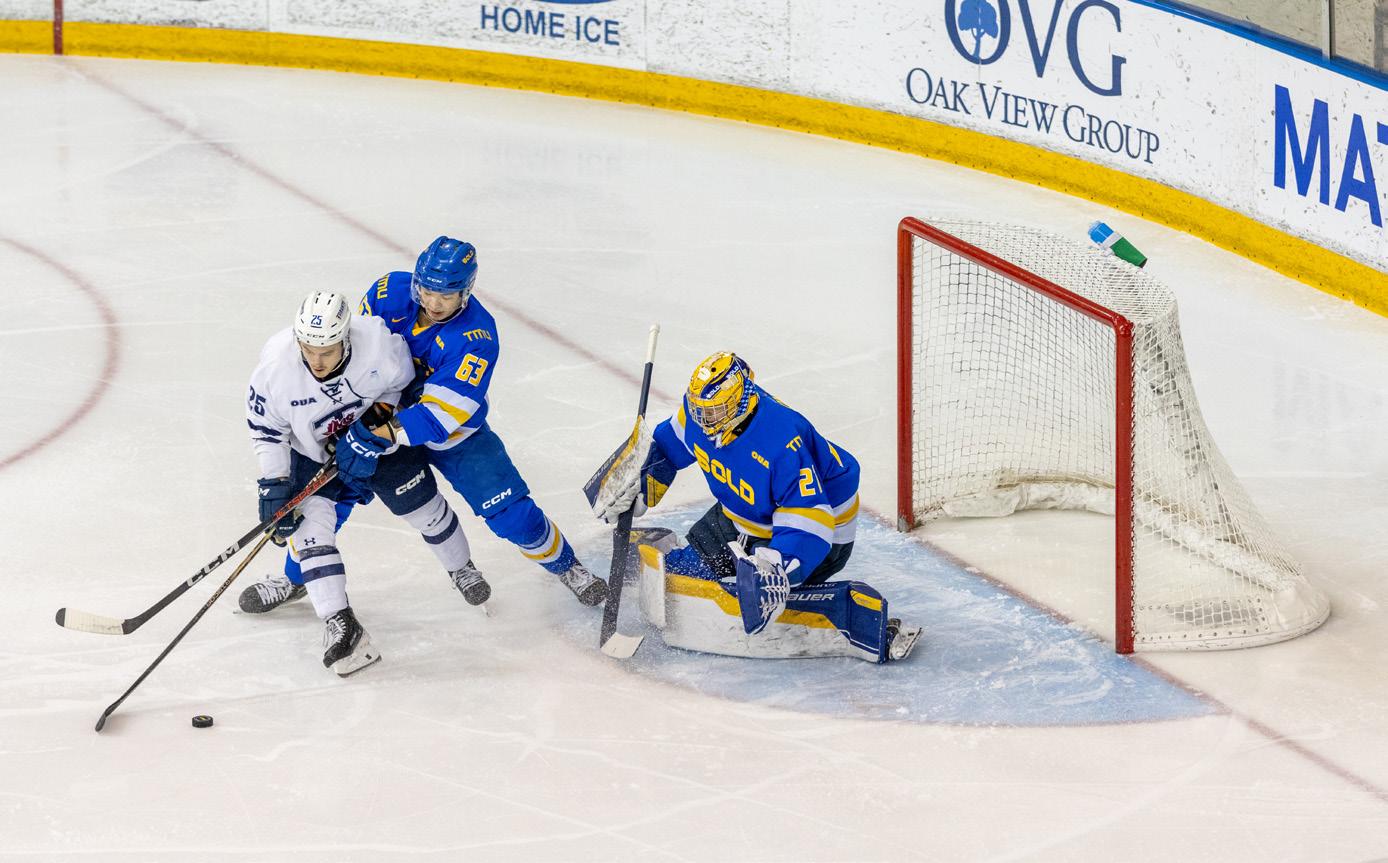
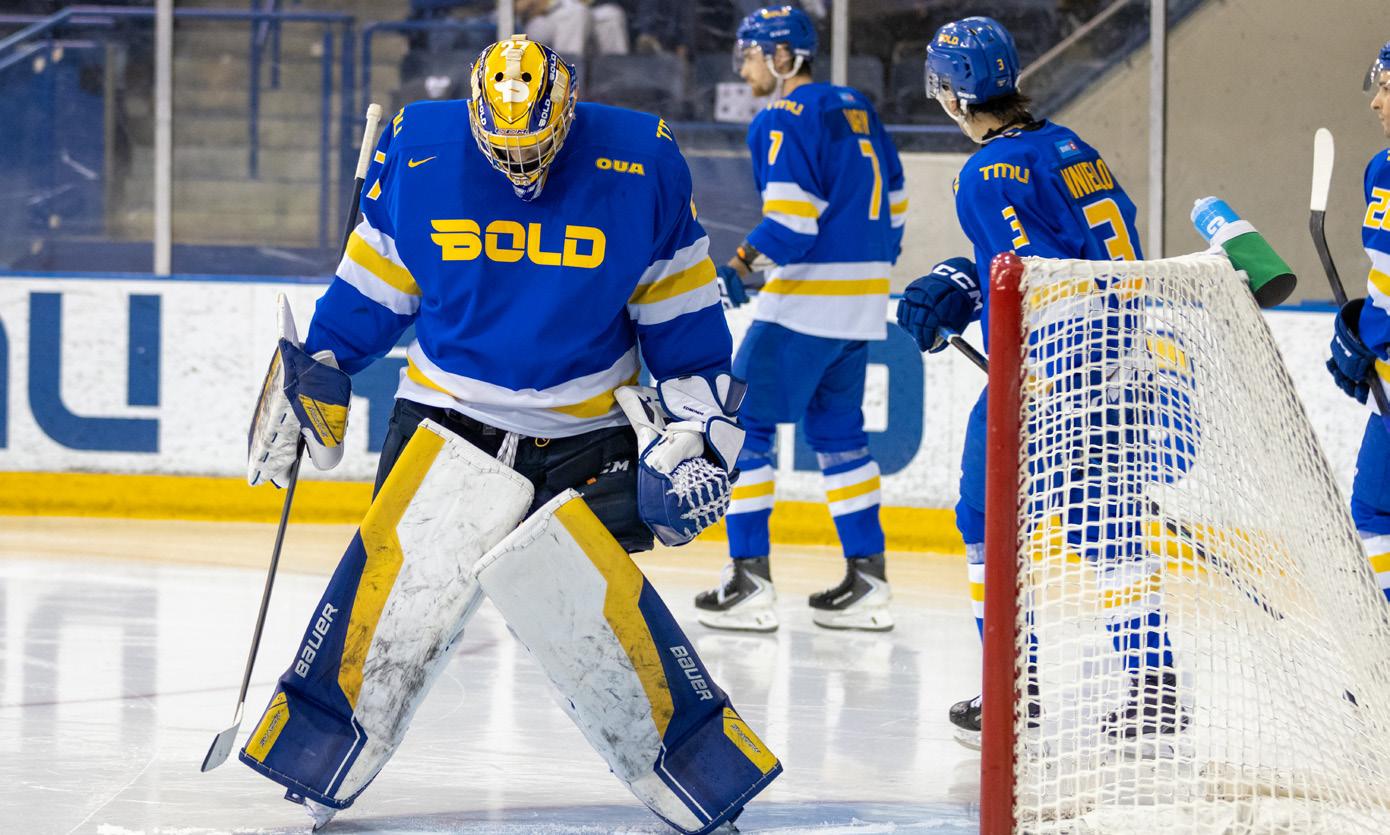
By Aditi Roy
At the Jackson Hole Economic Policy Symposium in late August, U.S. Federal Reserve chair Jerome Powell signalled rate cuts were coming. In midSeptember both the Federal Reserve and the Bank of Canada followed through, lowering their benchmark rates to support a weakening job market even as inflation remains above target.
For students at Toronto Metropolitan University (TMU), the effect of that decision could ripple far beyond central banks. Cheaper borrowing could lighten the load of student loans and credit card bills, while a stronger economy could mean more opportunities for students. However, experts caution that the short-term relief may come with longer-term risks.
TMU accounting assistant professor Aoran Zhang explains the mechanics of this decision in simple terms. “If you cut the benchmark interest rate…the cost of borrowing will be reduced significantly, and it’s good for the general public,” he said. “Mortgages will be cheaper, credit will be easier and it can stimulate the real estate market.”
Zhang noted the wider impact of this decision on the Canadian economy. Cheaper borrowing costs induce economic activity in Canada, leading to more jobs and better wages. But he
cautions that the benefits don’t come without potential risk.
“Every decision has its pros and cons. In the short term, the benefits outweigh the costs. But in the long term, if inflation rises too much, the cost of living can increase and damage the economy,” he said.
Statistics Canada reported inflation rose to 1.9 per cent in August, with unemployment at 7.1 per cent and 65,500 jobs lost. On Sept. 17, the Bank of Canada cut its key interest rate by 25 basis points to 2.5 per cent.
President of the Ted Rogers Financial Planning Association and thirdyear business technology management student Sujata Thakur reflects on how lowered interest rates could impact TMU students. “Rate cuts, lower interest rates kind of give students immediate relief…help free up cash for essentials, for small savings, or even for tuition,” she explained.
A TD survey in August reported 92 per cent of post-secondary students feel financial stress heading into the school year, with tuition, housing and groceries as their top worries.
Like Zhang, Thakur is wary of the long-term risks of this immediate reduction. “In the long run, lower rates can be a double-edged sword. They might encourage more borrowing, which can lead to higher debt down the road. Understanding your total debt and then the repayment plan is more important than
By Claire Van De Weghe
The Toronto Transit Commission (TTC) is considering replacing its long-standing monthly pass with a new fare cap system, which may save money for frequent commuters at Toronto Metropolitan University (TMU).
In a proposal released to the public on Sept. 4, the TTC’s Strategic Planning Committee said this fare cap would give passengers free rides on all systems after a set number of trips during that month, ranging between 40 to 47.
The system is aimed at encouraging ridership and replacing the $156 monthly pass with a cheaper alternative. But for students who are already on discounted fares, the benefits aren’t straightforward.
Andrew Pulsifer, executive director of the transit advocacy organization TTC Riders, said fare capping could encourage more ridership.
“A cap is just a more equitable way of getting people to take transit…it inspires people to take transit,” he said. “The TTC reports show that different caps of different levels will lead to a significant increase in ridership.”

chasing those short-term conveniences,” said Thakur.
Adrita Mutsuddi, a fourth-year economics and finance student, welcomed the rate cut. “One of the biggest things for a student is student loans…when the interest rate is lower, it will be easier for students to pay back their loans, as well as for young people to get a mortgage loan or buy houses,” she said.
According to Statistics Canada, Canadian bachelor’s graduates, on average, left school with over $28,000 in debt from government and nongovernment sources combined. Even the modest interest rate cuts are significant to ease the financial burden
of repayment for students managing loans post-graduation.
Mutsuddi added that businesses may invest more, creating job opportunities. “That means students will find it easier to find part-time jobs.”
The Bank of Canada’s second quarterly Consumer Expectation survey found that the fear of job loss remains high, especially among young people, and many Canadians still see the labour market as weak.
Still, she cautioned, “When you reduce interest rates, people will borrow a lot, and that means there will be lower savings.” She added that the cut is only a “temporary fix.”
For now, TMU students and experts are hopeful that the interest cuts will bring about relief from the current circumstances. While Zhang notes that although this policy alone isn’t enough, it is an imperative step in rebuilding the strength of the Canadian economy.
“With the right knowledge and tools, students can turn uncertainty into an opportunity,” Thakur expressed. “My hope is that more students take advantage of the resources around them…so they feel more empowered to manage their debt and budget effectively and be able to plan more confidently for their life after graduation.”
Currently, post-secondary students or those under 19 are paying $128.15 per month for a discounted monthly pass. Under fare capping, trips will be priced at $3.30, meaning riders could pay between $132 and $155.10. Depending on the cap level, commuters could lose up to $30 monthly with fare capping.
For younger riders under 20, Presto fares are $2.35 per trip, so a 40-ride ride cap could cost only between $94 and $110 per month, cheaper than the current pass prices.
The financial impact will also vary depending on how often students ride. A more frequent rider would hit the cap quickly, while others with lighter schedules may not reach the cap.
Antoine Belaieff, a former Metrolinx sponsor and now head of new markets at Swiss ticketing firm Fairtiq, says the financial weight of this new pass system could affect the TTC as well.
“Capping in isolation is great, but I think the devil is in the details,” he says, “if something is cheaper, and you don’t replace it with more riders. It’s not enough, at least in the short term, to make up for the shortfall. Does it have any impact on

funding? Is the quality going to decrease? Is the [fare] level set right?”
According to the TTC report, the council plans to pay between $10 and $35 million in the first year. Whether the TTC will benefit from increased ridership to make up for the gap remains uncertain. However, some students are worried about the overcrowding that may result from it.
“If [the proposal] does work, it may raise another concern, which is the overcrowding on transit,” expressed TMU second-year mechatronics student Jumi Bogis. “Maybe, if they upgrade the carts, or the amount of carts, [add] more timings for trains or subways, maybe that will solve the issue. Because it might backfire.”
Bogis has already seen the effects of overcrowding on her day-to-day
life, taking the GO train from Mississauga. She’s had times where she’s had to push through crowds just to get one of the few remaining seats on a train.
For students juggling tuition and bills, some remain cautiously optimistic, as spreading out the costs instead of paying a big expense at the start of the month could ease pressure.
One of these students is Jeanne Bilap, a second-year biomedical sciences student at TMU. Last year, they were constantly commuting between North York and the TMU campus. Bilap ended up spending $25 a day, just getting to school.
Bilap said commuting often meant paying separate fares for both GO or UP and the TTC passes, which adds up to nearly $300 a month. She expressed “I [had] my
tuition paid off and everything, but sometimes I literally just [couldn’t] afford to go to school.”
Because of the price they faced, Bilap says they had to quit their extracurriculars to avoid additional fares. Now living closer to campus and paying less to commute, Bilap sees other students facing similar issues.
More benefits and drawbacks will become clear as the TTC finalizes the details and considers how to balance its own finances with affordability.
Belaieff explains that “[fare capping] has a very different impact on different people,” he says. “Depending on how much they use transit, how much they rely on transit, and their income level. So that’s what needs to be looked at.”
By Peyton Andino
Disclaimer: This is where I’d usually put a disclaimer, but this is pretty likely to have happened. Uhh…just don’t, maybe?
For third-year biomedical engineering student Veronica Chan, the call of “big money, big money!” from horse race betting on FanDuel was a bit too alluring.
Chan found herself at the mercy of the ponies after losing all $700 worth of student loans on the, albeit roughly translated, Annual Bulgarian Run of Equine.
“I really, really thought I was going to win,” cried Chan in an interview with The Eyeopener this Wednesday.
“When I asked GrokAI under a post about some screaming blond kid, it directed me to this specific horse race as being a “sure-fire lock.”
The rising popularity of sports betting apps like FanDuel, 500 Casino and LuckyCasino have made students into high rollers overnight as the combined pressure of paying tuition,
actually receiving enough to fund their school experience and that new Simons that just opened up at the Eaton Centre’s Rick Owens, all pile up.
Chan isn’t alone. Across faculties, students are sending in bets to random foreign sporting events in hopes of winning against the assorted bald grandfathers throwing beers at their televisions.
“Pretty please? Please please with a cherry on top? Oh my goodness STOPPPPUH!”
This incident also brings into question how much the Ontario Student Assistance Program (OSAP) truly supports students, as Chan’s tuition totalled out to one gazillion, while OSAP gave her $600 in grants and $700 in loans. All nonarts degree students at Toronto Metropolitan University (TMU) specifically have found that the school has been asking for “knock your drawls off” amounts of money in comparison to other programs.

After polling 1,000 totally real and not fake students, the average arts degree student reported $8,000 tuition costs, while the average non-arts student reported a five million dollar payment in pure gold and one kidney (ownership varying).
Chan is leading the newest campaign to get students off online betting, and instead into the casinos.
“The experience of tapping on your phone screen is nothing in comparison to tapping on the actual slots screen with a culturally insensitive portrayal of a woman on it,” enthused Chan, waiting for the bus
to Casino Rama with a group of assorted students. “If I’m losing my money, I gotta watch it leave in real time. Big money, big money!” she chanted as her group followed. Students are being instructed by the definitely real Toronto Metropolitan Students’ Union (TMSU) to avoid gambling away their OSAP money.
“Neigh neigh neigh neigh…neigh”
“Pretty please? Please please with a cherry on top? Oh my goodness STOPPPPUH! This isn’t yewwwwuh…” said the interim TMSU
president on his hands and knees outside of the Student Campus Centre, much to the chagrin of the passerby students.
The horses aren’t happy about this either, citing the distrust in online betting as decreasing the popularity of their races.
“Neigh,” said Belson Rupert, the very horse that Chan bet on during a Zoom meeting on Thursday. “Neigh neigh neigh neigh…neigh.” He remarked, shaking his head (I think).
Next time you get a nice little loan from the government, heed the warning of Chan and hop on that GO Bus and go!
Picked the wrong elective—now you’re stuck, stressed and weirdly well-versed in something useless
By Shaye-Love Salcedo
Disclaimer: This piece is meant to make you laugh about the situation, not to stress you out more. If you actually need to drop a class, please talk to your academic advisor—not me.
Let’s get this out of the way first: yes, you absolutely chose the wrong elective. You knew it deep down when you clicked “enroll” on that course at 2 a.m. back in
August but you told yourself you were being “spontaneous” and “expanding your horizons.” It was a nice idea—except now your horizon is a 20-page research paper on an obscure topic you can’t even pronounce.
Don’t lie. You thought you were being adventurous when you signed up—now you’re trapped in a class you hate, Googling “how to drop without academic penalty” at 3 a.m. Every
time you open the syllabus, you have to physically stop yourself from dry-heaving.
“How hard can it be to write about my feelings?”
Sure, your professor seems nice, but also suspiciously passionate about their subject—which is unfortunate for you, since you signed up for “Astronomy for Non-Majors” thinking it would
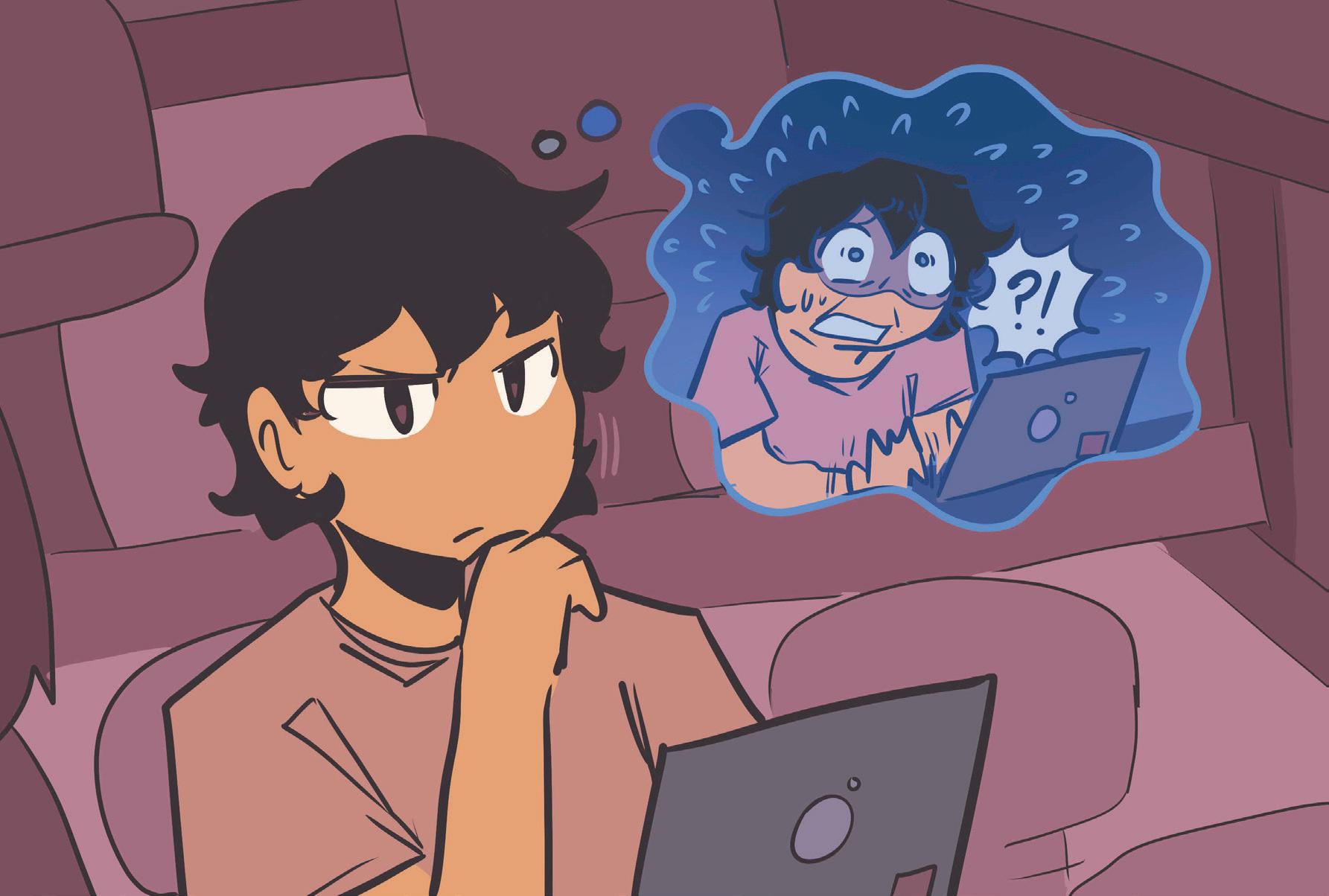
be about looking at pretty stars, not learning the math behind the expansion rate of the universe.
Maybe you thought you were choosing the easy route.
“‘Creative Writing’ will be fun,” you told yourself. “How hard can it be to write about my feelings?”
Except now you’re three weeks behind on a 10-page short story that must be “literary” and “reflect an understanding of narrative structure.” Your protagonist is still named “Protagonist.”
Or maybe you went the other direction—“Intro to Microeconomics” seemed responsible, mature, resume-friendly. However, every time you look at a supplyand-demand curve, your brain shuts down like a Windows XP computer running 17 programs at once. You are actively praying for inflation to disappear just so you don’t have to learn about it anymore.
And let’s be honest: some of you went rogue. You took “Philosophy of Death” or “History of Witchcraft,” thinking you’d be mysterious and intellectual. Now you’re sitting in a dark lecture hall listening to your professor ask whether you have truly accepted your own mortality. You’re probably thinking, “Actually, no. I have not, and I would like to drop this class immediately.”
Here’s the thing: everyone thinks they chose the wrong elective. That’s how electives work. If you chose the “right” one, it would feel suspiciously like a major requirement, and then you wouldn’t get to complain about it with your friends over iced coffee. The misery is part of the experience—you get a free existential crisis and a niche area of expertise you will never use again.
“Actually, no, I have not, and I would like to drop this class immediately”
But it’s okay, this is a rite of passage. In five years, you’ll be at some party, and someone will casually mention urban planning or medieval literature, and you’ll light up like a beacon. You’ll say, “Actually, I took a class on that,” and proceed to explain it in excruciating detail while everyone else zones out. That’s the real purpose of electives: to turn you into an unbearable know-it-all about one oddly specific topic.
So yes, you chose the wrong elective. You will hate every second of it, and you will complain endlessly and you will probably get a worse grade than you expected. But at least now you know better for next semester—until you sign up for something equally bad because it fits your schedule.

Submit completed crossword here
THE EYEOPENER IS GIVING AWAY TWO $50 GIFT CARDS TO IKEA
• Complete the crossword! Only 100 per cent accurate puzzles will be accepted.
• Complete the Google Form via the QR code below and add a photo of your completed crossword or visit The Eye office (SCC 207) with the completed crossword.
• Await an email! The form will close end-of-day on Oct. 1 and winners will be contacted shortly afterwards.
By Jocelyn Reycraft
AROSS
1. Sports teams at Toronto Metropolitan University (TMU).
4. A method of transportation to campus, could be by streetcar, subway or bus.
5. A name for all the buildings and TMU as a whole.
7. A week off for students, used to study and catch up.
8. A room where students live. It could be with a roommate or single.
DOWN
2. A lesson by a professor on campus.
3. The TMU mascot we all know and love.
4. Canadian fast food chain famous for being named after a hockey player.
5. One of the streets where the TMU Community Park is located, also known as Toronto’s pride street.
6. A quiet space for students to check out books and study.
By Eon Kang